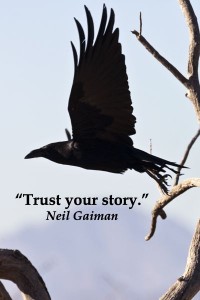Dear Integral Meditators,
This is an article that I prepared with some corporate clients in mind, it is another answer to the ever young question “what is mindfulness?”. Also, the practical exercise at the end is short but can have HUGE results.
Yours in the spirit of mindful flow,
Toby
 Mindfulness: The Co-Creation of Happiness and Performance
Mindfulness: The Co-Creation of Happiness and Performance
Mindfulness is the art and practice of bringing more conscious awareness to your activities, relationships, thoughts, emotions, desires and motivations. It functions primarily (though not only) as a method of strengthening the conscious mind and its attendant natural intelligence.
In each moment we are making choices about how much conscious attention and awareness we bring to our activities; mindfulness guides us to bring a high level of consciousness to the activities in our life where it is most important to be fully awake and engaged both personally and professionally.
Mindfulness functions to bring two main effects to our life:
- We become happier
- We become more effective at our chosen tasks
More than this, mindfulness helps create a win-win relationship between these two; the happier we become the more effective we tend to be at work and at home, and the more effective we are the happier we tend to be both in our professionally and in our personal life.
Up to this point in time the majority of people practising mindfulness have been doing so because they have come to understand the benefits of mindfulness to their own personal wellbeing and health. More recently organizations are coming to understand that mindfulness offers one of the best ways to improve employee engagement at work and to improve productivity. But why should this be so? Let’s take a closer look using three examples:
Personal happiness and effectiveness at work
Positively disposed people are more likely to find ways of being happy in their work (rather than looking to find work that makes them happy, which is a crucially different thing), when you feel happy your mind is relaxed, you feel good and so it is actually enjoyable to put effort in to your tasks at work. Enjoyment and effort combine to produce greater effectiveness and engagement at work. Greater effectiveness and engagement in tasks as we all know have a feel-good factor, and so our greater productivity gives rise to more personal happiness in a mutually complementary dance.
The way you feel about yourself directly influences how you manage change
Mindfulness is a way of leaning to bring a conscious appreciation of yourself and what you bring to the world; it helps to create what psychologists call a good self-image or self-concept. People who have solid, secure and positive self concepts are less threatened by external change and thus when change happens in the workplace they tend to have the capacity to respond to it rationally, consciously and intelligently. The capacity to manage change well in turn further re-enforces a positive self-image and concept, so again here we see a mutually re-enforcing relationship between the a strong self-concept and the capacity to manage change, both facilitated by mindfulness.
Confidence and personal responsibility increases both creativity and problem solving capacity
Mindfulness is a space where we can learn to consciously cultivate confidence in ourself and learn to take responsibility for the important things in our life. As we all know, confidence and the capacity to take responsibility are essential qualities that we need to bring to the table to creatively solve problems and put forward new ideas in our professional life.
Conversely, whenever we solve a challenge or come up with a new idea at work both our confidence and our tendency to take responsibility for tasks and problems. So again we see a mutually re-enforcing pattern where mindfulness improves our personal qualities and wellbeing which in turn strengthen and enhance our engagement at work and in life.
It turns out that the best way to improve professional engagement is to work on a person’s personal growth and wellbeing; whether a CEO or a cashier, a happy and centred person is always a more effective professional.
Two questions to begin working with your own mindfulness practice
So what does a mindfulness practice actually look like? Actually there are a variety of mindfulness practices that you can engage in. Here is a two minute one:
Or the first minute focus your conscious attention upon the question “What is good in my life right now”. For that time simply focus upon mentally noting the good and the positive in your life.
For the second minute focus upon one particular situation in your life and ask the question “What is the most important aspect of this situation that I need to pay attention too?” For the duration of that minute see what answer this question takes your mind to.
If you find it helpful you can write down your principal answers to both questions.
Two minutes of mindfulness practice right there. Try it for a week, see where it takes you.
© Toby Ouvry 2014, you are welcome to use or share this article, but please cite Toby as the source and include reference to his website www.tobyouvry.com









 Mindful Self-Leadership: Take Control of Your Life Direction and Wellbeing Through Awareness, Curiosity, Courage and Care.
Mindful Self-Leadership: Take Control of Your Life Direction and Wellbeing Through Awareness, Curiosity, Courage and Care.